Nikon has two Motor Drives which can be used with all FM2 series models. Depends on your budget and requirement, both MD-11 and the current MD-12 can be used. But since MD-11 was a product that was introduced way back in 1977/78. it may have some support problem and if you can afford, a little extra in investment is justified for a newer model MD-12. MD-12 is essentially an upgrade of the MD-11 with improved electronic and more importantly, when operate in "S" (Single mode), film advance is immediate after an exposure and ready for the next shot. The older MD-11 will only advance to next frame when you have lift your finger away from the shutter release button, which means there is a slight time lag.
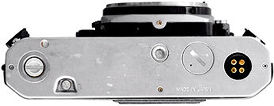 |
The base of the FM2 made all the differences when compared it with older midrange Nikon models such as the Nikkormat*. For it permits the use of automatic film advance devices such as Nikon MD-11 or MD-12 couples directly to the camera body - without caps to remove or lose. Added convenience is one thing, but with a Motor Drive attached, it also extends the capabilities of FM2 to new playground of remote, time lapsed, multiple FM2 setups or unmanned photography. |
* OFF TOPIC SUPPLEMENT: Nikon first produced their motor drive unit for the rangefinder model, Nikon SP of 1957. Nikon's first SLR camera, the Nikon F in 1959 came with two motor drives, a high performance 4 fps F36 Motor Drive and also a F-250 Motor Drive Unit. The professional Nikon F2 has three units: MD-1, MD2 and MD3 to support various needs and requirements. The First batch of midrange Nikon, the Nikkormat, were not designed to use with Motor Drive at all. It has to take the 2nd model of the electronic Nikkormat, EL-W of 1976 (Workable with EL2 of 1977) to have a dedicated winder (AW-1) to offer a relatively slow speed rate of 2 fps it means - NONE of the Nikkormat other than Nikkormat EL-W and EL2 has a motor driven capability. In comparison, Olympus OM-1 of 1972 was a killer, it has a 5 fps motor drive as accessory, even the Pentax K2 of 1975 came equipped with a 3 fps motor drive. The Nikkormat's weakness was apparent then. Thus, the original FM of 1977 and FE in 1978 aimed to patch what the Nikkormat do not provide and put Nikon back to the competitive edge by offering a 3.5 fps automatic film advance rate with a MD-11 which was replaced with a slower but very reliable 3.2 fps MD-12 in 1980.
Most users would appreciate the advantage of attaching a motor-drive for situations like fast pace and responsive sports, wildlife and reportage photography. Powered film advance may also increase success rate of photography which, previously missed shots may occurred due to shutter wasn't wound or couldn't be wound fast enough.
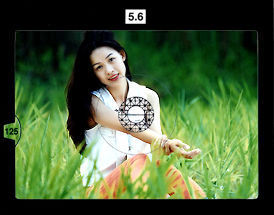 |
With a motor drive attached, photographer can literally follow the action without the distraction and loss of time involved in manual film advance. With the right accessories, too, even remote-controlled shooting becomes possible. |
For those working on the field, a motor drive also provides better balances if you are frequently working with long, bulky tele-lenses. The original MD-11 was officially being discontinued around 1980, making way for an upgrade, the MD-12. Since then, we haven't seen any major upgrade for this 18-years-old workhorse from Nikon. One may wondering why there wasn't any upgrade for the MD-12, because cameras like the multimode Nikon FA was designed with much advanced motre drive. The dedicated motor drive designed exclusively for Nikon FA , MD-15, featured improvements such as an energy saving circuit; and it will even allow the camera automatically draws power from the motor drive's battery (Workable only with MD-15/Nikon FA combination, the Nikon FA, will still works with an MD-12 for normal power film advance operation but it is not usable with any of the FM nor FE series models). However, unlike models such as all those electronic Nikon bodies of FE, FE2 and FA which can share the same motor drive of either MD-11 or MD-12, these newer motor drive had retired from service. MD-12's sole reason being still offering as new accessory is just to supplement users of Nikon FM2(n). Since the FM2n series models are mechanical bodies, it was not equipped with any other features as with the Nikon FA and thus there is no further needs for other potential improvements at all. * Note: Neither FM10/FE10 has a motor coupling for automatic film advance which means it CANNOT use with any motor drive !
Other than the motor drive's provide a comfortable hand grip, it has a two-position mode selector: "S" for single frame advance; "C" for continuous operation at up to 3.2 fps, there is more reasons to invest into one as it needs only a set of eight AA penlight batteries to power as many as 100 36 exposure rolls of film.
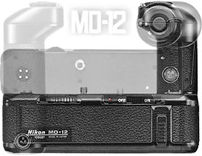 |
There's also a built-in terminal for connecting a variety of Nikon remote control accessories. In fact, if you want to have a hand on wireless remote photography, a motor drive is a must as all system accessories are designed to work with a motor drive ! |
Some Nikon
electronic flash units, such as SB-15, SB-16B, SB-6 Repeating
Flash
or handle flash like SB-11, SB-14 , can be tilted for bounce-light effects
or rotated for close-up work. Beside all those lovely flash features, most of these
flash units are powerful enough* to shoot in sync with
the Nikon MD-12 motor drive at up to 3.2 fps. * WARNING: The SB-15 which has a relatively weak
guide number, but may still be possible if working flash distance is close enough.
With "MD" setting, the effective guide number will be reduced based on
number of repeatable flash and performance varies depending on flash working distance.
Both Nikon
FM2 and later FM2(n) models operate in similar fashion with either older MD-11 or
the current MD-12 and they take in all the system accessories that being designed
previously and should work fine with current ones as well with minimal incompatibility.
Over the last two decades, the MD-11/12 has proven to be a real workhorse class motor
drive and won confidence and respect among users and rivaling competitors. Should
one invest into a Motor Drive ? Yes and no. It is very much depends on your type
of photography. If you shot less than 5 rolls per month and mainly engaging in leisure
photography, has a rather tight budget to spare for this hobby, obviously that is
not a necessity. But motor drive still presents a good investment for improved responsiveness,
handling and a good companion for any photography other than added weight to the
basic camera body. The Motor Drive, MD-12 in particular, is an extremely well made
and rugged piece of hardware and seldom create any mechanical problems. Another consideration
is its efficiency which is almost double of any model among its class and making
break down cost per roll very economical. One would wish this fine piece of accessory
to incorporate some upgrade as with other model such as MD-15. But since its primary
role is to supplement users of FM2(n) series models and all those cameras within
the series have no provision for energy saving circuitry (function like those find
on MD-15 designed exclusively
for Nikon FA or the MD-4 Motor
Drive
for Nikon F3 which would power the camera's metering and operation) and power film
rewind incorporated (Apply only to MD-4), hence, there is no such necessity either,
unless of cause, there is a "Nikon
FM3"
in the future that might carry with such specifications. But even then, Nikon would
use the MD-15 as the basis for an upgrade and possibly added a power rewind feature
and most likely comes with a ridiculous price tag, make you choke and pay for that
little 'extra' ....
A joke
? No.
After twenty years of age, the FM2(n), survive continuous 'onslaught' of technological
competitions from autofocus models within Nikon and rivaling brands, remains a sensible
favorite among startups in schools and art colleges (Nikon should thank all those
teachers, lecturers..and all those photographic tutors); But Nikon also capitalized
on rising cost of production and high volatile currency fluctuations to push up prices
of mechanical bodies to a level which resulted in attracting competitions. There
comes some very respectable names such as Contax, Leicas and even Olympus to join
in this specific battleground. Make no mistakes here. I rated Nikon FM2(n) models
highly - easily one of the best in terms of overall price versus performance ratio
and with another important consideration of its ability to adapt with the diversity,
quality, availability (New and Used) of system accessories behind the basic camera
body.
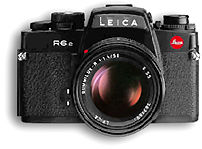 |
But that does not mean the FM2 models featured are the best in the world. Currently, my personal vote for best mechanical SLR cameras available todate are the Olympus OM-3Ti and Leica R6.2. |
Huh ? We are in a Nikon FM2 site and sounds as if I am recommending a Leica and Olympus ? No. take note, rating is one thing, but I didn't mean to promote or influent anyone's buying decision to opt for another 'better' brand. My concern is, it takes Nikon to think about what is lacking in the upcoming possible Nikon FM3 (If ever it will ...in the future). So, what is so special about Leica and Olympus ? All those features mentioned are actually "standard features" find in even a modern entry level electronic SLR camera but they are carefully and sensibly select and incorporated into a mechanical camera, that is all - but it made all the difference between a good and great mechanical camera.
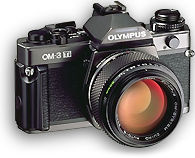 |
Basically, what these two bodies have achieved to incorporate all those modern functional and well proven features into a mechanical camera body. So, both OM3Ti and R6.2 are actually providing true-TTL flash exposure control, Spot/Partial and center weighted average metering control at your finger tips.The OM3Ti also has an unusual one push button control for highlight and shadow exposure control, all protected within a rugged Titanium body shell. For fast speed action, the OM body has a 5 fps high speed motor drive or a slower LCD control panel 2.5 fps power winder ! The Leica, on the other hand, workable with a slower winder but without some nifty features of the OM-3Ti. |
But what a sad state, all these lovely features come with a stupid and ridiculous price tag and thus, not commonly affordable by general users. While the Leica R6.2 and Olympus OM3Ti was introduced back in the late '80 and early '90 respectively; a relatively unexpected entry was from Contax, which brought a more realistically priced SLR in Contax S2/S2b. It has a Titanium top and bottom cover (body shell is made out of a die cast aluminum alloy) and you can either select a spot metering model (S2) with a very weak metering range of EV4-EV20 OR a more common counterweighted average metering version (S2b) (EV1-EV19) which was introduced later. The Contax S2/S2b is virtually tailored to take on FM2(n) with all possible similarities like shutter speed of 1 sec to 1/4000sec; 1/250 sec maximum sync speed, film speed range from 12-6400 and has a provision of 4 types of interchangeable focusing screens.
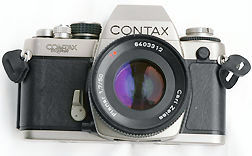 |
However, it has some weaker areas such as lack of a true working motor drive or even a winder which restricted full scale use of remote accessories. and fast action bound photographers. |
Neither the Contax S2 has a dedicated databack few years after its official introduction. The spot meter S2, in particular has a under-performing metering range of 4-20 which may post some problems for low light photography ! Is that all ? No. The Olympus, other than its impressive OM-3Ti, has a low end entry model, Olympus OM 2000 that essentially ranks at par with Nikon's stupidly-speced FM10 but posts a strong challenge to Nikon FM2(n). OM 2000 is intelligently designed with a choice of a durable die-cast aluminum body shell and a very well layout body.
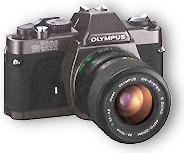 |
The top and bottom of the OM2000 are finished in a ternary-compound alloy made of nickel, copper and zinc. Not only is it very durable, but the finish comes in a striking bronze color with the look of quality. I thought those guys at Olympus at least have put more attention to their product, even if both FM10 and OM2000 are rumoured strongly made by the same contract manufacturer, Cosina, the same company that manufactured Canon T60, Pentax's P30T... |
One of the main technical highlight of the OM2000 is its optional way to select spot metering other than conventional counterweighted metering. Another strong selling point is its price which is only halved of that when compared with a FM2 and it provides accessibility to more economical price range of Zuiko lenses. Weak points for this model is its lack of any power film advance motor drive, fixed screens and no workable databack which may hinder progress of a migration path should one gets serious into photography. But overall, it is still a very attractive SLR camera posting a good score with price versus performance ratio and posting a good threat to FM2.
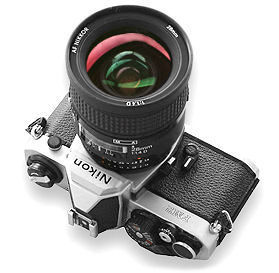 |
But it is strange to notice Nikon is not doing anything to respond to all these threats. But it seems they are quite contented with what the FM2 has provided since 1982. Actually, given the same situation, if ever there will be a spike on price, I would rather don't want to see any upgrade of any FM2 as we are seriously lacking a good entry SLR model for beginners. |
Anyway, One of the many strong reasons behind investing into a Nikon SLR such as FM2(n) is none other than the 70 odd manual focus optics along with any of the current 30 odd autofocus Nikkor lenses which, most of the time you can source them in the cheaper used market. The Nikkor, has everything from a fisheye that can see behind itself to an array of lenses that includes the world's fastest 80-200mm zoom and an amazingly powerful 2000mm telephoto.
| Although Nikon has actually produced more than 200 variations of lenses since inception of their first SLR, Nikon F way back in 1959, but in 1979 with the introduction of the first ultra compact model, Nikon EM which has a fixed and non retractable meter coupling lever on its lens mount which signified Nikon has finally gave up supporting non-AI lenses on their midrange SLRs (The professional F-series still do but only permits the use of Non-AI optic to operate in stopped down metering). | 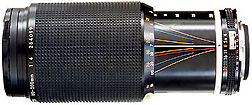 |
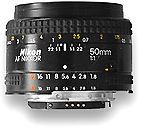 |
Among all models within the FM series, only the original Nikon FM of 1977 has such flexible meter coupling lever affixed on the mount and thus making them still workable with older optics. ALL FM2(n) models featured here, only takes in a minimum spec of AI-modified Nikkor lens and you should not attempt to use it with any non-AI lenses.
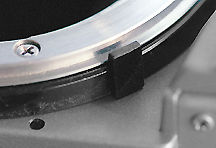 |
WARNING: Although it is still possible to mount the lens and stopping the lens diaphragm manually, but since Nikon claims it may damage the lens mount which I doubt it will, but still, it is an advice come from a manufacturer, we just have to respect that. <<--- * The famous F-mount used on the FM2n, is made of chrome-plated brass, permits thousand time of lens changing but it has a fixed meter coupling lever and thus, you would need a minimum spec of AI-modified Nikkor lens to enjoy proper metering. |
Nikon's bayonet system of mounting lenses provides swift and ease lens changing operation even with a single hand or in pitch darkness. It has proved durability in over a few decades of even hard and demanding professional use. Naturally, the buggest attraction is still, unlike the mount on some competing cameras such as Minolta and Canon which has shifted to newer electronic mount, the FM2 bayonet accepts both old* Nikon lenses and those currently made.
* The FM2 is compatible with all AI Nikkor, modifed AI Nikkor, Series E and current 30+ AF Nikkor lenses.
|
Previous | Next | (4/5 parts) A little XTRA... unless you are
abled to tune in to be a little neutral in your thinking, you may choose to | skip next section | of which opinion expressed
is entirely personal from a view point of a consumer which I hope it won't dampen
your spirit as a Nikon user.
|
Back | Main Index Page
of Nikon FM series Bodies
| Back | Index
Page of Nikon FM2 models
| Back | Index
Page of Nikon FM2(n) models
Full Specifications: Main Reference
Map
: HTML | PDF
Nikon
FM2n's Instruction
Manual
is ONLY available in HTML format
(6
parts)
Standard
production Nikon FM Series models:-
Nikon FM | Nikon FM2 | Nikon FM2n | Nikon FM10 | Nikon FM3a |
Known
variants:-
Nikon
FM Gold
| Nikon
FM2/T
| Nikon
FM2N Tropical Set
| Nikon
FM2/T Limited Edition
| Nikon
FM2N LAPITA
|
Nion
FM2n Millennium 2000
| Message Board | for
your favourite Nikon
FM Series SLR models
| Message
Board | for your Nikon
Optics in a shared environment
| Message Board | Specifically for Dispose or Looking for Nikon/Nikkor
Photographic Equipment
Shared
Resources: MD-11 | MD-12 | Focusing
Screens
| Titanium
Shutter
| Flash Units -SB-16 | SB-15 | SB-10 or other Options | Databack | Nikkor lens mount (related info)
Others:- Nikon AF-TTL Speedlights | SB-20 (1986) | SB-22 (1987) | SB-23 | SB-24 (1988) | SB-25 (1991/2) | SB-26 (1994) | SB-27(1997) | SB-28 (1997) | Nikon SB-29(s) (2000) | Nikon SB-30 (2003) | Nikon SB-600 (2004) | Nikon SB-800 (2003) Nikon AF-TTL Speedlight DX-Series: Nikon SB-28DX (1999) | SB-50DX (2001) | SB-80DX (2002)
Nikon
BC-flash Series |
Original
Nikon Speedlight
SB-2
| SB-3 | SB-4
| SB-5
| SB-6 | SB-7E
| SB-8E
| SB-9 | SB-E
| SB-10
SB-11
| SB-12 | SB-14 | SB-140 UV-IR| SB-15 | SB16A | SB-17 | SB-18, SB-19 | SB-21A (SB-29) Macro flash | Flash Accesories | SF-1
Pilot Lamp
Instruction
Manual: Nikon FM (HTML | PDF) | Nikon FM-10 (HTML) | Nikon FM2n's
User's Manual
available only in HTML format (6
parts) | Nikon
FM3A
(HTML)
Specifications: Nikon FM, FM-10, FM2, FM2n and FM3A / Main
Reference Map: (HTML) Nikon FM, FM2, FM-10, FM2n (Applicable
to FM2T, FM2 "Year of the Dog"; Millennium 2000") and Nikon FM3A
| Nikon F | Nikon F2 | Nikon F3 | Nikon F4 | Nikon F5 | Nikon F6 | Nikkormat / Nikomat | Nikon FM | Nikon FE/ FA | Nikon EM/FG/FG20 | Nikon Digital SLRs | Nikon - Other models |
Nikon Auto Focus Nikkor lenses:- Main
Index Page
Nikon Manual Focus Nikkor lenses:- Fisheye-Nikkor Lenses - Circular | Full Frame |
Ultrawides Lenses - 13mm15mm18mm20mm | Wideangle Lenses - 24mm28mm35mm | Standard Lenses - 45mm 50mm 58mm | Telephoto
Lenses - 85mm105mm135mm180mm & 200mm | Super-Telephoto Lenses - 300mm 400mm 500mm 600mm 800mm 1200mm |
 Index Page |
Special
Application lenses: Micro-Nikkor Lenses - 50mm~55mm -60mm 85mm -105mm 200mm Micro-Zoom 70-180mm Perspective Control (PC) - 28mm 35mm PC-Micro 85mm Dedicated Lenses for Nikon F3AF: AF 80mm f/2.8 | AF 200mm f/3.5 EDIF Depth of Field Control (DC): 105mm 135mm Medical Nikkor: 120mm 200mm Reflex-Nikkor Lenses - 500mm 1000mm 2000mm Others: Noct Nikkor | OP-Nikkor | UV Nikkor 55mm 105mm | Focusing Units | Bellows-Nikkor 105mm 135mm Nikon Series E Lenses: 28mm35mm50mm100mm135mm | E-Series Zoom lenses: 36~72mm75~150mm70~210mm |
MF Zoom-Nikkor Lenses: 25~50mm | 28~45mm | 28~50mm | 28~85mm | 35~70mm | 36~72mm E | 35~85mm | 35~105mm | 35~135mm | 35~200mm | 43~86mm | 50~135mm | 50~300mm | 70~210mm E | 75~150mm E | 80~200mm | 85~250mm | 100~300mm | 180~600mm | 200~400mm | 200~600mm | 360~1200mm | 1200~1700mm
Tele-Converters: TC-1 | TC-2 | TC-200 | TC-201 | TC-300 | TC-301 | TC-14 | TC-14A | TC-14B | TC-14C | TC-14E | TC-16 | TC-16A | TC-20E
Recommended links to understand more technical details
related to the Nikkor F-mount and production Serial Number:
http://rick_oleson.tripod.com/index-153.html by: my
friend, Rick Oleson
http://www.zi.ku.dk/personal/lhhansen/photo/fmount.htm by: Hansen,
Lars Holst
http://www.mir.com.my/rb/photography/hardwares/nikonfmount/lens2.htm
http://www.photosynthesis.co.nz/nikon/serialno.html
W A R N I N G: The New G-SERIES Nikkor lenses have no aperture ring on the lens, they CANNOT ADJUST APERTURES with any of these manual focus Nikon FE series SLR camera models; please ignore some portion of the content contained herein this site where it relates.
|
Back | Main Index Page of Nikkor Resources
|
Back | Main Index Page of Pictorial
History of Nikon SLRs
| Message Board | for your Nikkor optics ("shared" because I do wish some of you to expose to other's perspective as well. Isn't it a sad sate to see photography has to be segmented into different camps from the use of various labels)
about this photographic web site
Home - Photography in Malaysia |
Credit: To all the good people who has contributed their own experience, resources or those who are kind enough granting us permission to use their images appeared in this site. Mr. MCLau®, who has helped to rewrite some of the content appeared this site. Chuck Hester® who has been helping me all along with the development of all these Nikon websites;LarsHolst Hansen, 'Hawkeye' who shares the same passion I have; Ms Rissa, Sales manager from Nikon Corporation Malaysia for granting permission to use some of the official content; TedWengelaar,Holland who has helped to provide many useful input relating to older Nikkor lenses; Some of the references on production serial numbers used in this site were extracted from Roland Vink's website; HiuraShinsaku from Nikomat Club Japan. t is also a site to remember a long lost friend on the Net. Note:certain content and images appeared in this site were either scanned from official marketing leaflets, brochures, sales manuals or publications published by Nikon over the years and/or contribution from surfers who claimed originality of their work for educational purposes. The creator of the site will not be responsible for may discrepancies arise from such dispute except rectifying them after verification."Nikon", "Nikkormat", "Nippon Kokagu KK" & "Nikkor" are registered tradename of Nikon Corporation Inc., Japan. Site made with an Apple IMac.